Lower back pain is just a symptom, an external manifestation of a certain disease or pathology.Every pain has its cause.There are many causes of back pain.
Patients are often told that back pain is caused by overloaded muscles and ligaments.Unfortunately, if the cause lies solely in the muscle, it will be very easy to relieve the pain.For example, a massage will bring a feeling of relief.But massage does not always work because it removes the cause of pain.
Severe back pain can occur due to disc herniation or disc protrusion.If the disc herniation is on the right side, you may have right back pain, right side pain or right leg pain (sciatica due to large herniation).If the hernia is on the left side, you may feel pain in the left side of your back and may experience pain in the left side.
If a large hernia compresses the left lumbar root (Radiation inflammationon the left), then low back pain may occur in the left leg and pain may begin in the left leg.Large hernias often cause postural disorders in the form of trunk deformities accompanied by acute "twisting" pain, the inability to stand up straight and straighten (the so-called anti-pain position of the trunk).
Back pain in the lower right side can be the result of problems with hernias or joints on the right side of the spine, or pathology of the sacral region (right sacroiliac joint).
Pain in the left shoulder blade area (or pain under the left shoulder blade) can be the result of hernia or joint pathology or heart problems.Such pain can be caused by angina and heart attack.Pain between the shoulder blades occurs not only with diseases of the spine and osteoarthritis, but also with diseases of the stomach (gastritis, ulcers, cancer, etc.) and often the intestines.
Cholecystitis and gallstones often cause pain in the right back and pain under the right shoulder blade.Gallbladder disease often presents as pain under the right rib.Need diagnosis.
Overhangplate, often incidental findings on MRI,maybeProceed without any pain.Disc herniation– is not a common cause of severe back pain.Although, the formation of a hernia, such as when lifting heavy objects, will cause lumbar or lumbar pain (sharp pain in the back).In cases of ongoing back pain, the hernia found on MRI may not be related at all.The reasons for such constant pain are often different. Diagnosis will help you figure it out.
Therefore, to effectively treat back pain and back pain, you need:
- Determine the cause of lower back pain (establish the diagnosis).
- The cause of lower back pain will be determined by a neurologist, an orthopedic surgeon skilled in the field of vertebrae and chiropractic, or a vertebrae specialist (spine specialist).Diagnosis is established by clinical and hardware examination.
- Treatment strategies for low back pain depend on the diagnosed cause.
- If you have lower back pain, it is important to make sure that the pain does not return.To achieve this, we offer a variety of methods, including physical rehabilitation of the spine.
Lower back pain.Why does my lower back hurt?
Low back pain is pain localized in the area between the 12th pair of ribs and the gluteal fold.This kind of pain is already a social problem.The fact is that the lower back is the heaviest load-bearing part of the spine, able to withstand daily and hourly overloads.85% of the population has experienced low back pain at least once in their life.What is the reason?

Pain in the lumbar regionThere can be many reasons.The most common causes are osteoarthritis, disc herniation, radiculitis and pathology of the lumbar joints.
Osteoarthritis
Osteoarthritis–Natural aging of spinal tissue.
It is generally accepted that osteoarthritis is a sign of a spinal disease, accompanied by pain.This is a little different.
The image below shows a damaged normal disk (see damaged disk in the picture).These lesions can accelerate the aging process of the disc and cause its loss of height (see “narrowing of the intervertebral space”).Next, the aging process begins to affect the bone tissue of the vertebrae itself and bone spurs develop (see “bone spurs” in the figure).
Previously, it was believed that osteochondrosis was associated with pain.So at that time they tried to explain the cause of pain in the spine and lower back in particular as osteoarthritis.For this reason, the question of the failure of chiropractic even arises.In 1978, the first research laboratory on osteoarthritis of the spine was established, studying the problem of osteoarthritis for more than 10 years and proving that the cause of pain is not osteoarthritis but joint pathology.
Cartilage degeneration is not accompanied by pain because the disc does not have nerve endings.Therefore, there is no pain when suffering from osteoarthritis.

Disc herniation
A herniated disc is a possible cause of pain.The image above shows some cases of disc herniation - small (bulging) disc herniation and large disc herniation.Herniated disc itself does not cause pain.

The disc has no nerve endings (not innervated).Pain from a herniated or bulging disc occurs when the protruding portion of the disc puts pressure on nerve tissue.For example, abovespineor abovebehindyuyulongitudinalOhbundlein.In the first case, nerve root pain occurs - radiculitis (see below).In the second case, when the receptors of the posterior longitudinal ligament are irritated, back pain (lumbodynia) or acute pain - lumbago (lumbago) appears.
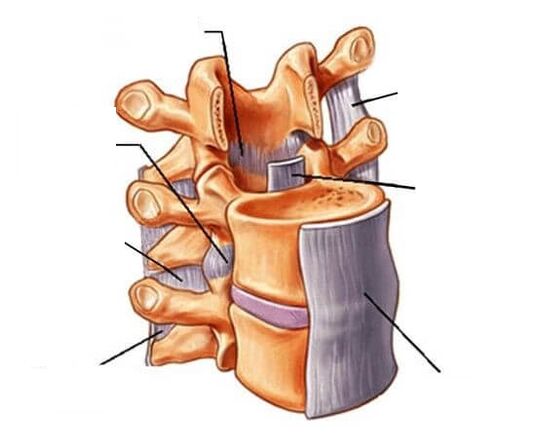
Herniated discs can often be treated without surgery.
Osteoarthritis of the vertebrae
Spondyloarthrosis is arthritis of the spinal joints.Arthritis itself is characterized by a disease of the joint cartilage.In this case, the cartilage decreases in height (degenerates, “drys out”) and the joint surface loses its protective layer of cartilage.Spinal joints begin to ache.This pain feels like lower back pain.
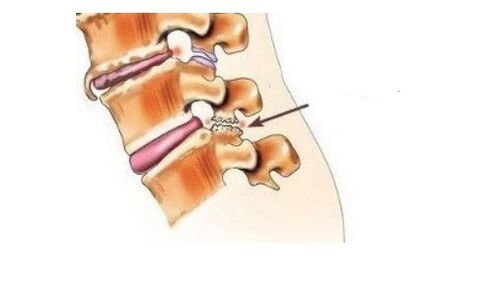
Inflammation of the nerve root
Radiculitis is an inflammation of the roots.Radiculitis most commonly occurs when the roots are damaged by a herniated disc or spinal joint.Usually, this condition does not amount to back pain but rather pain in the legs, buttocks and pain or numbness even in the toes.
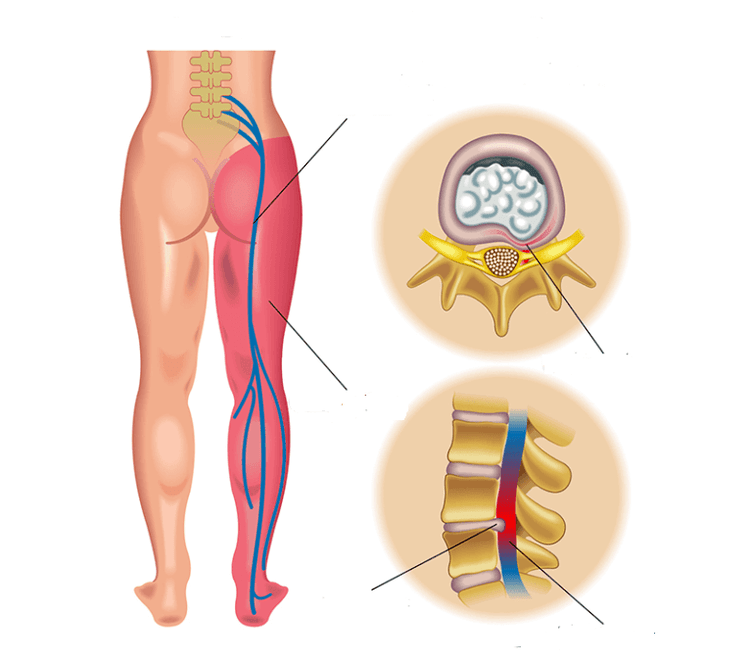
Radiculitis is most effectively treated by radical debridement.If it arises due to disc herniation, it is necessary to reduce the herniation, putting pressure on the root.
Back and lower back pain due to internal organ diseases
Back pain can occur due to pathology of internal organs.For example,lower back pain in womenmay be the result of pelvic pathologies.
Lower back pain in women
Lower back pain in women can be caused by inflammatory diseases of the female genital organs.
If a woman has pain in the pelvis and lower back, then you should always remember gynecological diseases.Inflammation of the female genital organs is not uncommon.The cause can be inflammation of the adnexa, inflammatory diseases of the vagina and vulva, salpingitis, salpingoophoritis, endometritis, bacterial vaginosis, etc.Most often, such inflammatory diseases in women are caused by infections of the genital area, including sexually transmitted diseases.
If the lower back hurts and at the same time there is pain in the lower abdomen, the woman needs to be examined by a gynecologist.Gynecological ultrasound is mandatory to clarify the initial diagnosis.
Constant persistent pain in the lower back also occurs whencancer in gynecology.
Cancer and back pain in women
Cancer is initially painless.When pain appears in the lower back or sacral area, it may be too late.
Many people believe that tumors are often accompanied by pain.This is wrong.In the early stages of tumor development, a person does not feel pain.The person practically feels healthy.For example, cervical cancer has no symptoms in the genital organs.It begins to manifest when the tumor grows.In this case, the pain often appears in the lower back and lower back.Pain below the lower back is in the sacrum area.
With cancer, severe pain in the lower back does not bother you at first.Rather, the lower back does not hurt but aches.Such pain can be the first call to help a woman stop the serious growth of the tumor and make an accurate diagnosis in time.If the lower back or sacrum hurts constantly, you should pay special attention to this so as not to miss the disaster.
Unfortunately, if you do not pay attention to pain or discomfort in the lower back area, the next sign of cervical cancer may be uterine bleeding.This is the stage when the tumor begins to disintegrate, when there may be metastasis.Even in the spine, when there is severe pain in the lumbar region.
Important lessons:If your lower back hurts, it's not necessarily osteoarthritis or a herniated disc.And it never hurts to get a preventative consultation with a gynecologist.After all, cervical erosion detected on examination is a precancerous condition.
Why does my back hurt due to urinary or genital problems (inflammation)?
Acute back pain can be caused by kidney disease
Severe lower back pain due to kidney disease such as pyelonephritis.
Pyelonephritis is an infectious disease, usually caused by ascending infection.It can be associated with both sexually transmitted diseases and other types of household infections transmitted through swimming pools, bathrooms and personal hygiene items.For example, everything lasts a long time in unwashed towels.
Inflammation activates pain receptors in the soft tissues of the pelvic organs.Pain signals (impulses) reach the spine through sensitive roots, activating the tissues of the spine.The soft tissues of the spine and the attachment points of the back muscles swell (inflame) reflexively.And my lower back started to hurt.
Constant back pain and back pain due to dysfunction and other diseases of the gastrointestinal tract
When suffering from intestinal cramps, bloating, ulcers or ulcerative colitis, stomach ulcers and gastritis, the back often hurts.
Stomach cancer linked to back pain
Treating back pain caused by gastrointestinal disease will not bring about improvement.The cause needs to be treated.
Another possible cause of lower back pain is back overload.
Excessive loading on the lower back is a common cause of back pain or its worsening.Overload often affects the lower back joints, lower back ligaments, tendons or muscles.Furthermore, the muscles of the lower back work actively under load.Therefore, if you have pain in the lumbar spine after exercising, it is not necessarily a disease.It could be a muscle rupture.If this pain does not disappear within 1-2 days, you should think about a problem in the lumbar spine.Especially if this pain increases with movement.
The cause of such pain is often excessive inflammation of the muscles and their attachments.Or – capsulitis.
If such an exacerbation occurs more than once a year, you should look for the cause of such exacerbations.To do this, it is not enough just to consult a doctor and perform manipulations, take painkillers, massage and other procedures.
Testing is needed to determine the cause of such frequent exacerbations.
Soft tissue injury to the lower back
Sharp pain in the lower back when moving awkwardly or when lifting heavy objects is most likely a spinal injury.
If you are worried about pain on that side, for example, pain in the right lower back, then you should think about pathology of the joint located on the right side.Or about right hernia of the lumbar spine.
Types of lower back pain
The pain, taking into account the duration, can be acute, chronic or transient (passing).
The pain is as follows:
- Local pain– pain specifically in the lower back area.
- Pain is introduced– when pain occurs not only in the lower back but also in the buttocks and pelvic area.Or pathology of internal organs causes pain in the lumbar region.In such cases they talk about referred pain.
- Radial pain– differ significantly in intensity and are located within the boundaries of the distribution of the roots (from the spine to the periphery).The cause is violation (stretching, compression, curvature, compression) of the nerve roots of the spinal nerves.Movement or even coughing increases pain due to the so-calledcough.This is severe pain in the lower back that can shoot (radiate) into the legs.
- Myofascial pain– is the result of reflex muscle contraction.The cause of myofascial pain can be due to diseases of internal organs or damage to the spine.Muscle spasms significantly disrupt the biomechanics of human movement.Chronic muscle spasms can also cause pain and cramping in the lower back.
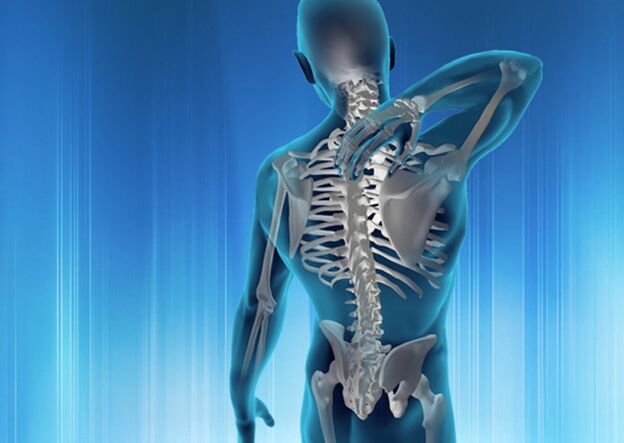
In what cases should you see a doctor for lower back pain and what should you do?
- with sharp (acute) pain in the lumbar region;
- if back or lower back pain lasts more than 3 days;
- if back pain appears after injury;
- if the pain is localized simultaneously in the lower back, feet and legs;
- if pain in the lumbar region is combined with numbness in the thighs, buttocks, legs, feet, groin;
- if the pain in the lumbar region is accompanied by convulsions (twitching) of the muscles of the limbs;
- if urination and defecation function is impaired (urinary retention, urinary incontinence, frequent urination or false urge to urinate);
- if the perineum is numb.
- If the pain in the back or lower back (sacral) is constant, worse in the morning
What to do if you have lower back pain?
The causes of low back pain are diverse, therefore treatment of low back pain should only be carried out after diagnosis and diagnosis by a qualified doctor.Any pain in the vertebrae area requires medical examination and clarification of the cause.
Going to see a doctor has 3 goals:
- Establish an accurate diagnosis.
- Eliminate pain.
- Develop measures to help maintain the patient's health so that the pain does not recur.
Possible causes of lower back pain
The following diseases may be the cause of your complaints of pain in the lower back:
- osteoarthritis;
- osteoarthritis;
- spondylolisthesis;
- vertebral degeneration;
- ankylosing spondylitis;
- degenerative disease of the vertebrae;
- muscle damage;
- ligament damage;
- disc herniation "HerniaIntervertebral discs are treated without surgery in 98% of cases (world statistics)";
- atherosclerosis of the abdominal aorta;
- Malignant tumors of the spine;
- metastasize to the spine;
- urinary tract infection;
- spinal stenosis;
- biliary tract disease;
- penetrating duodenal ulcer;
- pancreatitis;
- kidney disease;
- abdominal aortic aneurysm surgery;
- hemorrhage into the retroperitoneal tissue;
- Inflammatory disease of female genital organs;
- female genital cancer;
- Endometriosis;
- prostatitis;
- Prostate cancer;
- abscess of epithelial coccygeal duct;
- arterial embolism of the lower extremities;
- Intermittent limping;
- intermittent pseudoclaudication;
- Elimination of atherosclerosis of the lower limbs;
- rheumatoid spondylitis;
- Polymyalgia rheumatica;
- fibromyalgia
- depression;
- other.
Treating lower back pain (back pain)
At the initial stage of treatment of pain in the lower back (back), the main diagnosis is determined.This is done based on a survey, medical history, neurological and orthopedic examination.At this stage, medications may be prescribed for pain relief, tissue swelling, and general anti-inflammatory treatment.Acupressure, local drug effects, regional anesthesia, various injection methods for treating low back pain, laser therapy, etc.are all effective.During the acute and subacute stages, rest is important during drug treatment.Physiotherapy, massage, manual therapy, methods that can aggravate the process, are not indicated.In the acute stage, traction is also not used: on hardware, on inclined boards, on wall bars.
To treat low back pain more effectively, you need to understand the cause.For this purpose, the patient is subjected to further examination to clarify the diagnosis.There can be many causes of pain in the lumbar region.The list of diseases associated with lower back pain is listed above.Each of them has its own treatment regimen with a list of the most effective methods, drugs and procedures.The protocols also contain data on methods not indicated for this disease.For example, for inflammatory diseases of the spine (spondylitis, spondylosis, spondylitis, myositis, tendinitis, etc.), manual therapy, massage and physiotherapy are not indicated due to ineffectiveness and risk of complications.It is necessary to determine the cause of inflammation and treat it.
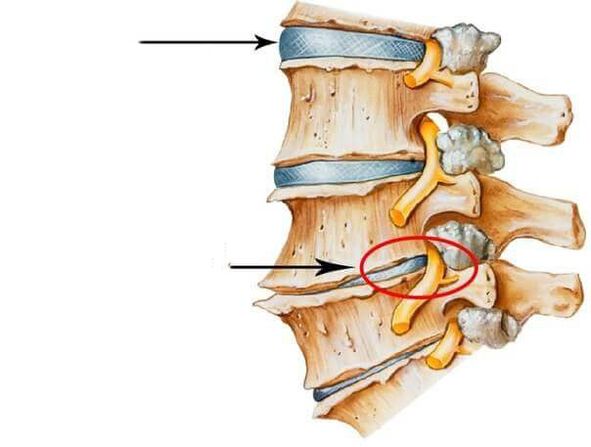
Radiographically visible spondylosis can occur without clinical symptoms and often masks a more complex disease.Therefore, treatment of spondylosis is useless and often dangerous: removing bony growths in the spine is neither practical nor necessary.Patients may encounter strange diagnoses such as "muscle damage", "muscle spasm", "ligament damage".Unfortunately, saying muscle spasms are the cause of pain is not always true.Muscle spasm of the paraspinal muscles is a reflex action and, as a rule, accompanies most diseases, including those not related to the spine.Muscles actively participate in the process of segmental reflexes and can react to any stimuli both in the spine and outside the spine.The so-called "spasms" must be distinguished from reflex or radiating pain in the lower back, which can be caused by pathologies of internal organs: diseases of the pelvic organs, retroperitoneal cavity, kidneys, pancreas and prostate, gynecological diseases of inflammatory or tumor origin, diseases of the aorta, hemorrhage into the retroperitoneal tissue, etc.Osteopathic techniques to treat secondary paraspinal muscle spasms may temporarily alleviate the condition at the reflex level.For example, manual therapy, chiropractic techniques, tilt planks, massage, traction, physical therapy will not help prostatitis or adenoma.So-called "elimination treatment".“muscle spasm” in this case is just the desire of the manipulator.
Treatment of herniated and bulging discs in the lower back
Typically, an MRI scan shows a herniation or protrusion, which is understood to be the cause of lower back pain.The question immediately arises: remove the hernia or try to cope without surgery?
First things first– clarify how clinically significant this herniation is.In fact, if you take 100 perfectly healthy people with no low back pain and perform an MRI diagnosis, 80% of them have some type of disc protrusion (“herniation”), which does not cause any symptoms.
Often, a herniated disc may be an incidental finding, often attributed to another cause of pain.
At the same time, reality shows that not all hernia cases are clinically significant.To clarify the cause of pain, one must take a thorough medical history, do a neurological examination to identify neurological defects, clarify the function of the pelvic organs, etc.
It turns out that not all herniated and bulging discs require surgery.The number of patients requiring such surgery is no more than 2%.
Neurosurgeons have established absolute and clearly defined indications for surgery.Typically, the presence of a herniated disc is not a reason for emergency surgery.
There is a complete arsenal of tools to treat herniated and bulging discs, including traction, formation of stabilizing motor tissues in the back, local and general drug treatments, physical therapy, acupressure, and more.Corrective treatment without surgical intervention is often accompanied by resolution of symptoms and the hernia (protrusion) may decrease over time.
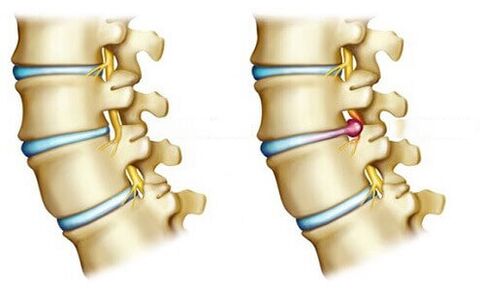
When making a surgical decision, one must take into account the relative indicators for surgical treatment officially prescribed by neurosurgeons.Each specific case is considered individually, taking into account clinical symptoms, medical history, anamnesis, neurological and orthopedic examination, hardware and laboratory examination results.
It is especially important to note that surgical intervention often comes with a number of complications, which must be treated many times more thoroughly after surgery than with preoperative pain relief.
Degenerative changes in the spine, such as osteoarthritis, spondyloarthritis, spondylosis, etc., are treated based on the identification of the causative agents of the pain syndrome.
Massage and manual therapy are quite effective treatments when prescribed.Over the past three decades, the Institute has developed optimal protocols for managing patients with low back pain, taking into account many possible causes.

















































